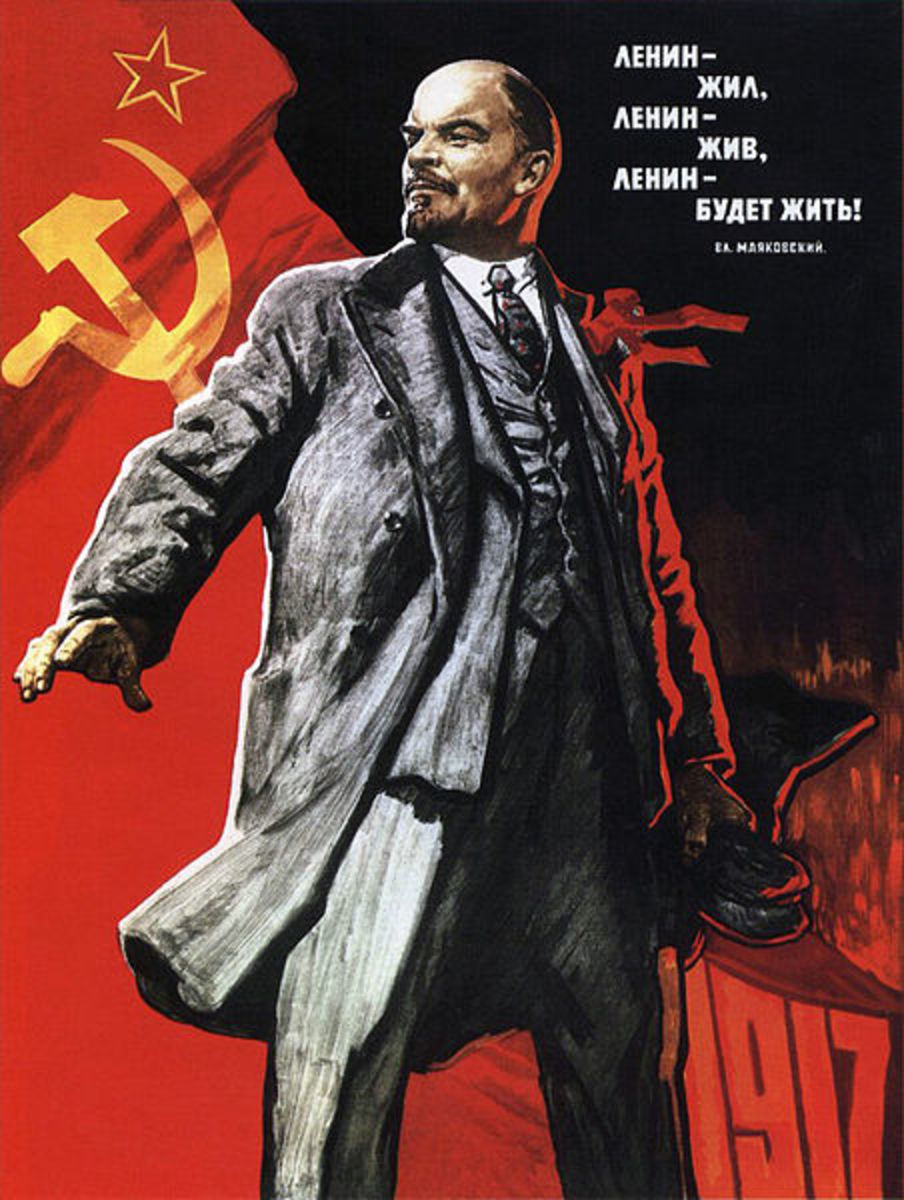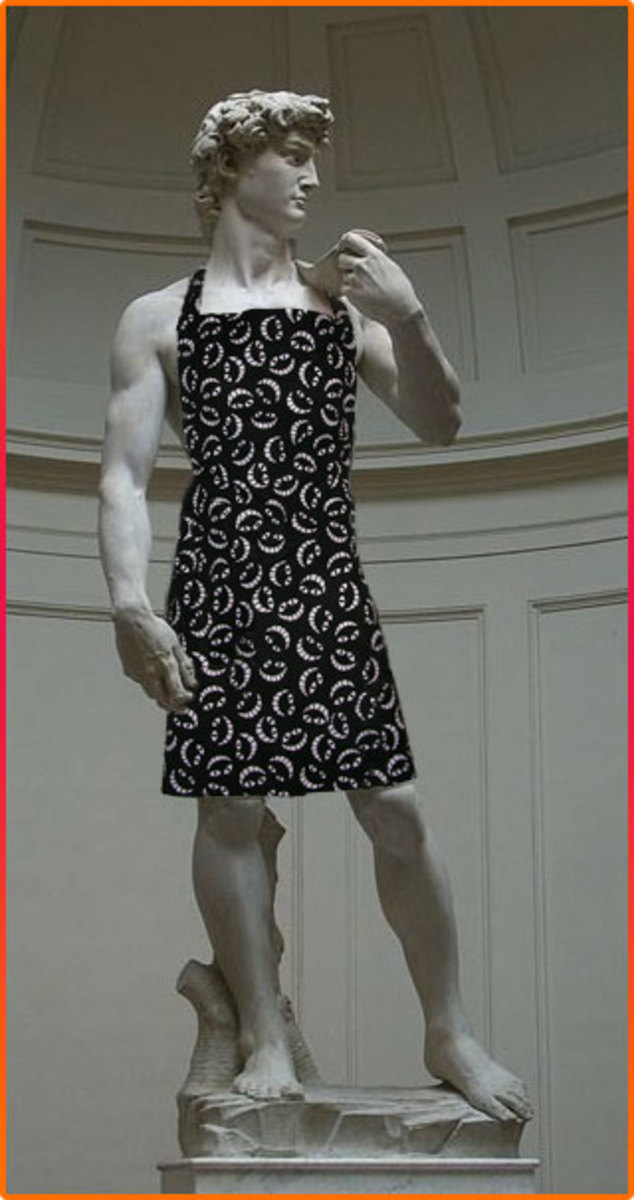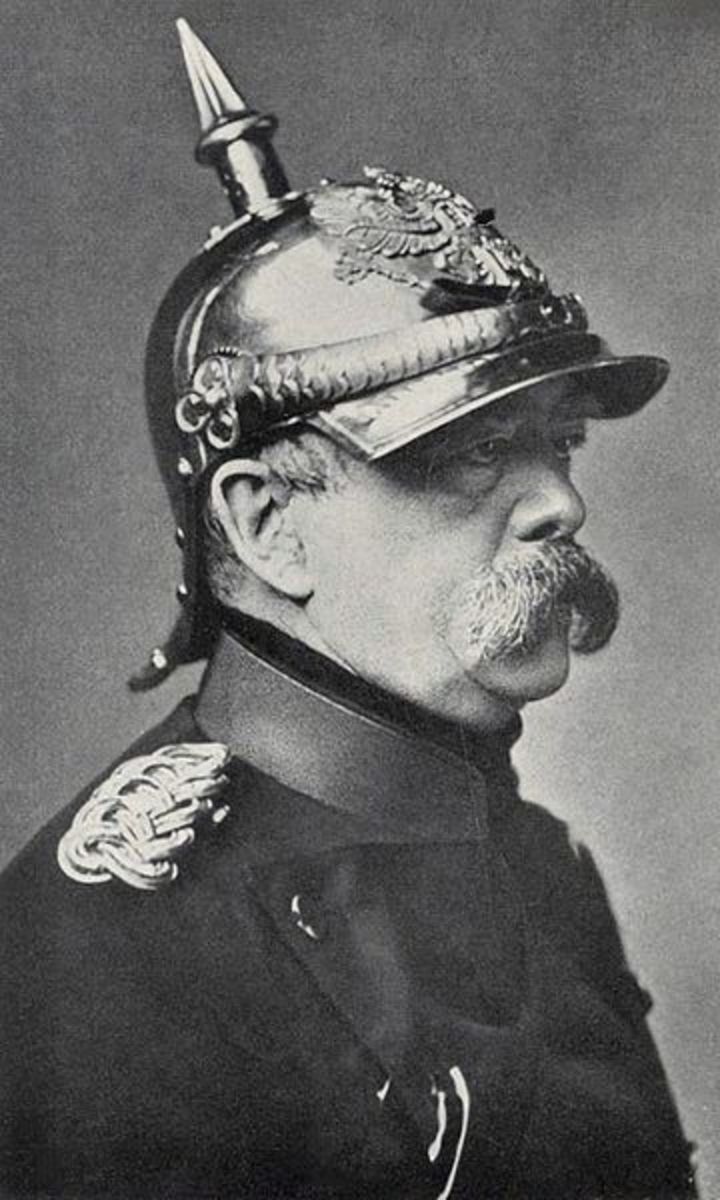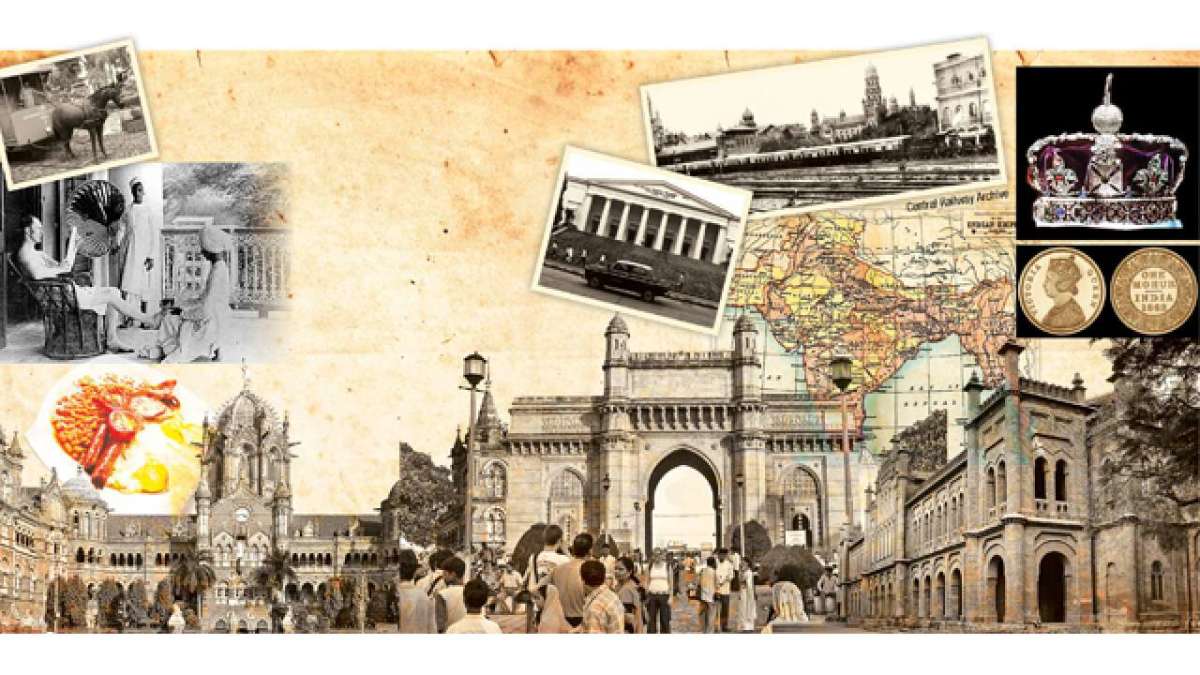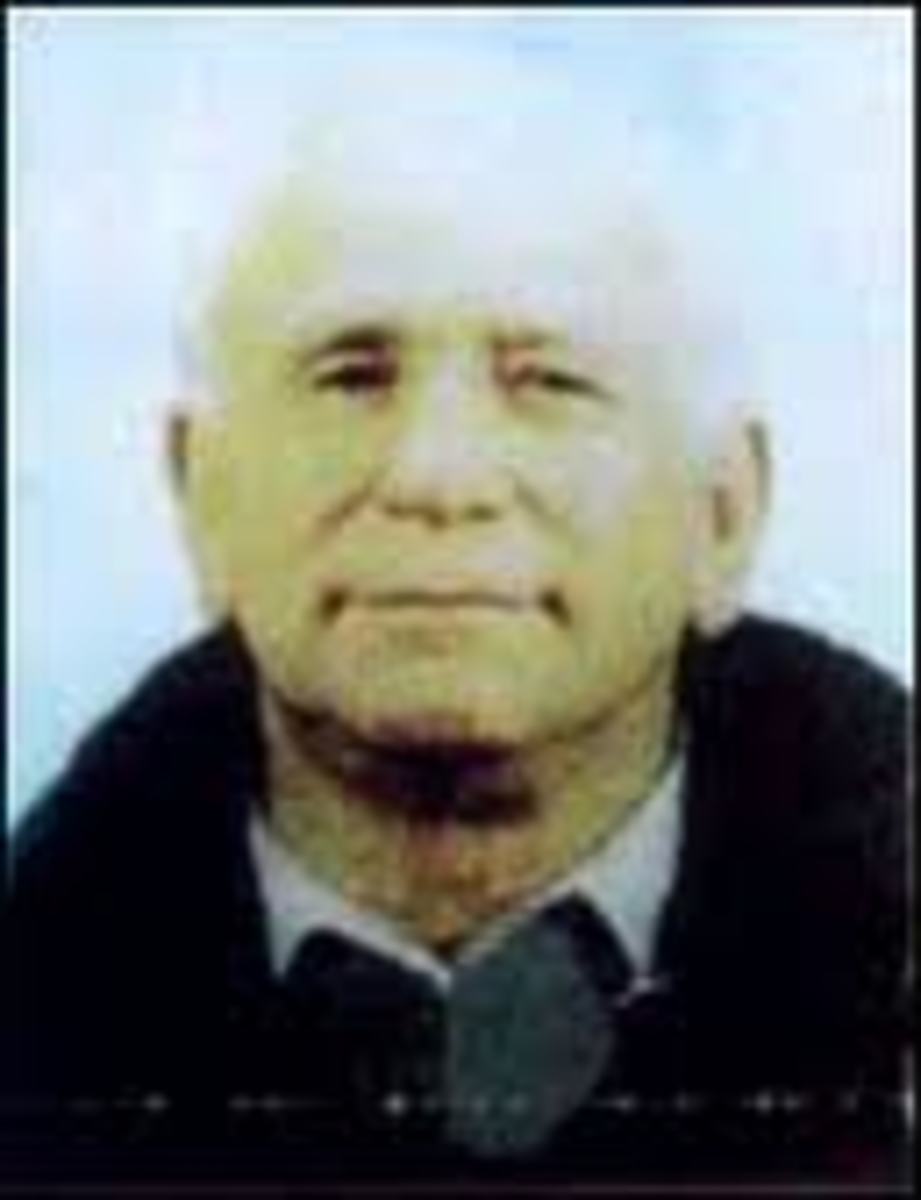Women in Early Soviet Society
Women Began to Take on New Roles in WWI
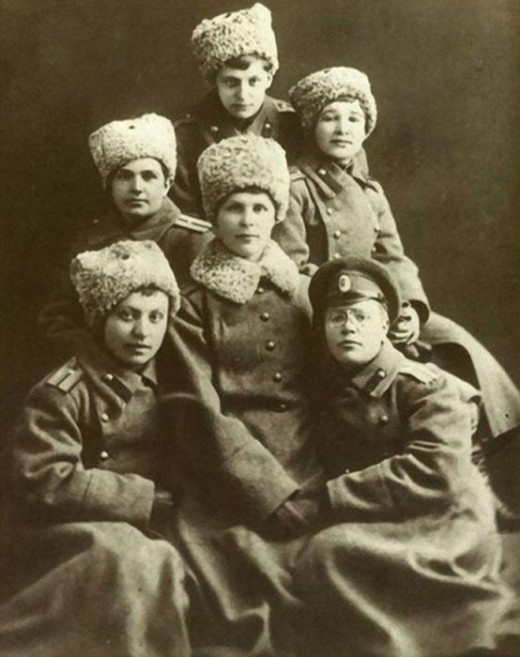
The Russian Revolution Brings Change for Women
The Russian Revolution demanded changes in the lives of the people from Tsarist Russia. In the upheaval of the regime change, life changed dramatically for women in particular. The revolution and later the Soviet government relied on the support of women to secure their position of power. The soviet government created the Zhenotdel (Women’s Department) “to rally women to the revolution and to socialism,”[1] and in return the soviet government promised the liberation of women. The liberation of women consisted of raising them up from the oppression of men and establishing their place as equals in society. To do this, the Zhenotdel advocated for women, new jobs were opened to women, education was encouraged, women were encouraged to vote, and family structures were altered. Yet, traditional family values and gender roles along with the Soviet Union’s need for women to fulfill domestic roles during the period of quick industrialization kept women from realizing full equality. This shift in Russian society has been portrayed in Russian literature; Valentine Kataev’s characters Shura and Fyenya in Time, Forward! present some of the new roles of women and their struggles to get there.
[1] Barbara Clements. “On Soviet Women (1921-1941)” 57.
The Role of the Zhenotdel
The Zhenotdel was originally created by the soviet government to bring the support of women to their side. While accomplishing this, the Zhenotdel developed their mission to become the advocates of women in the new Soviet Union. They worked hard to empower women to become more independent.[1] The Zhenotdel not only offered opportunities for women through their own department, run by women, they also publicized new opportunities for women in other career fields.[2] The soviet government viewed women as an untapped labor source and as such opportunities for women opened up in industrial sectors. Women were also encouraged to learn how to use farming machinery and talk leadership roles in the collectivization of agriculture. The Zhenotdel also encouraged women to establish daycare centers and work in places like restaurants and laundries.[3] The Avant-garde movement also opened itself up to women to seek career opportunities in the arts.[4] In Time, Forward! both of Kataev’s characters, Shura and Fyenya, like many women had joined the work force. Shura joined as an artist who created industry posters. Fyenya, like many women joined the work force alongside men in various positions including ones of manual labor. Kataev uses both Shura and Fyenya to highlight some responses from women of the work place and responses to women in the work place as well.
The Zhenotdel used pamphlets and magazines like Krestianka (Peasant Woman) and Rabotnitsa (Woman Worker) and other methods like sending speakers to cities, towns, and villages and holding conferences to present women with these new opportunities.[5] One of the roles of the Zhenotdel workers visiting those villages or towns was to read the pamphlets and magazines to those who were illiterate so that every woman could be empowered through these ideas. While literacy was on the rise, many of the peasants were still illiterate.[6] Kataev’s character Shura, the artist, encounters struggles with literacy when we are first introduced to her. Some boys around her are having a contest to be the one to write the most letters, however upon review of the letters every single word was misspelled. When questioned on their spelling, the boys reply “‘you are not very literate yourself.’”[7] By including this scene, Kataev is commenting on the low literacy level in Russia at this time. Despite the efforts of the Zhenotdel, the soviet government disbanded it in 1929, as it felt that there was no place for a women’s organization in their government. Part of this change was because the aim for equality for men and women did not leave room for separation between the two, however Clements argues that on the lower levels of the government the push to disband the Zhenotdel was a result of sexism.[8]
[1] Clements. “On Soviet Women.” 55.
[2] Clements. “On Soviet Women.” 52.
[3] Clements. “On Soviet Women.” 54.
[4] Clements. “On Soviet Women.” 51.
[5] Clements. “On Soviet Women.” 54.
[6] Clements. “On Soviet Women.” 54.
[7] Valentine Kataev. Time, Forward! Trans. Charles Malamuth. Evanston, IL: Northwestern University Press (1995). 19.
[8] Clements. “On Soviet Women.” 56-57.
Women's Suffrage Demonstration, 1917
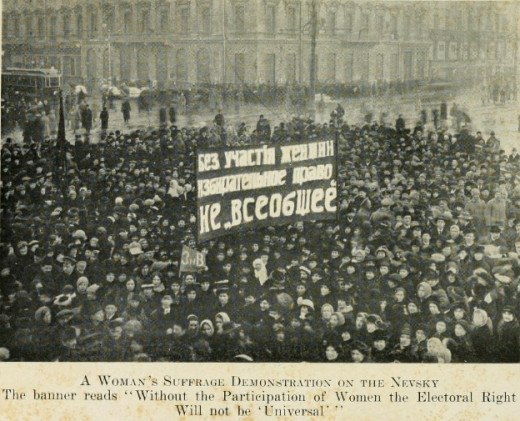
Re-Written Gender Roles
Sexism had been deeply rooted in the patriarchal society of Russia creating strong gender roles. Before the revolution women were domestic creatures. Their role was to watch over the home, raise children, and be subservient to their husbands.[1] When women were introduced to the working world these gender roles were forced to shift. The family dynamic also changed as people including women left the rural areas to go to the city for better work opportunities. The large family was broken up into smaller nuclear families.[2] The concept of marriage for love was on the rise at this time, as well as the idea of free love. Some men took advantage of the situation and many women were left with children with no one else to take care of them.[3] Kataev’s character Fyenya depicts one such woman who became pregnant out of wedlock.[4] The divorce rate and the number of unwed mothers rose further changing the family dynamic. Some of these women along with widows who could not take care of themselves independently joined together in community living. In response to the evolving family dynamic, soviet government created a new marriage law giving women more financial security after divorce and a sex code that discouraged promiscuity.[5]
[1] Clements. “On Soviet Women.” 59-60.
[2] Clements. “On Soviet Women.” 63.
[3] Clements. “On Soviet Women.” 64-65.
[4] Kataev. Time, Forward! 13-14.
[5] Clements. “On Soviet Women.” 65, 68.
Workers Outside a Soviet Factory
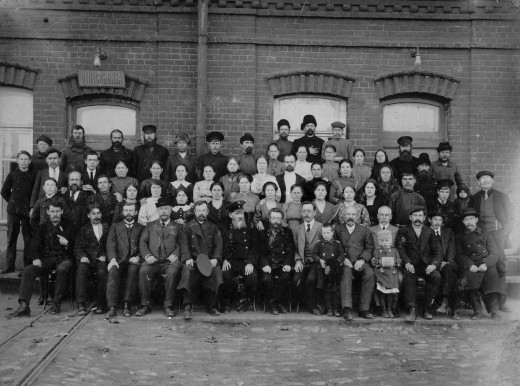
The Creation of "The New Soviet Woman"
The new complicated role of women in society as a worker and part of the family created the concept of the “New Soviet Woman.” The new soviet woman was supposed to be equally productive as men in the work place while completing the domestic obligations to the family.[1] The soviet media had fought to secure places for women in the work force and to prove that they were just as good of workers as men.[2] However, many women were discouraged from joining the work force because it was too much work to do both.[3] As a result soviet media adapted to portray the woman who was both a worker and a mother as a hero to try to persuade more women to join the work force. Men were not targeted to pick up similar dual-roles.[4] While this system undermined the goal for equality for all, the soviet government could not afford to socialize domestic responsibilities during the rapid industrialization period.[5]
[1] Clements. “On Soviet Women.” 73.
[2] Clements. “On Soviet Women.” 62.
[3] Clements. “On Soviet Women.” 72.
[4] Clements. “On Soviet Women.” 74.
[5] Clements. “On Soviet Women.” 73.
Conclusions
Kataev’s characters Shura and Fyenya depict some of the changing roles of women in the early stages of the Soviet Union. While seeking equality for all, the soviet government attempted to liberate women from the oppression of men. In their attempt to complete this goal, the Zhenotdel was created and empowered women to seek the new employment and educational opportunities that now existed for them. The social changes in the early period of the Soviet Union, including the entrance of women into the work force, dramatically changed family dynamics and challenged existing gender roles. The soviets’ own goal of equality had to be put on hold while women were burdened with both labor and domestic duties as a result of the rapid industrialization. Throughout these changes women were patient and accepted the responsibility handed to them by their government, and without them the rapid industrialization of the Soviet Union may not have been possible.

